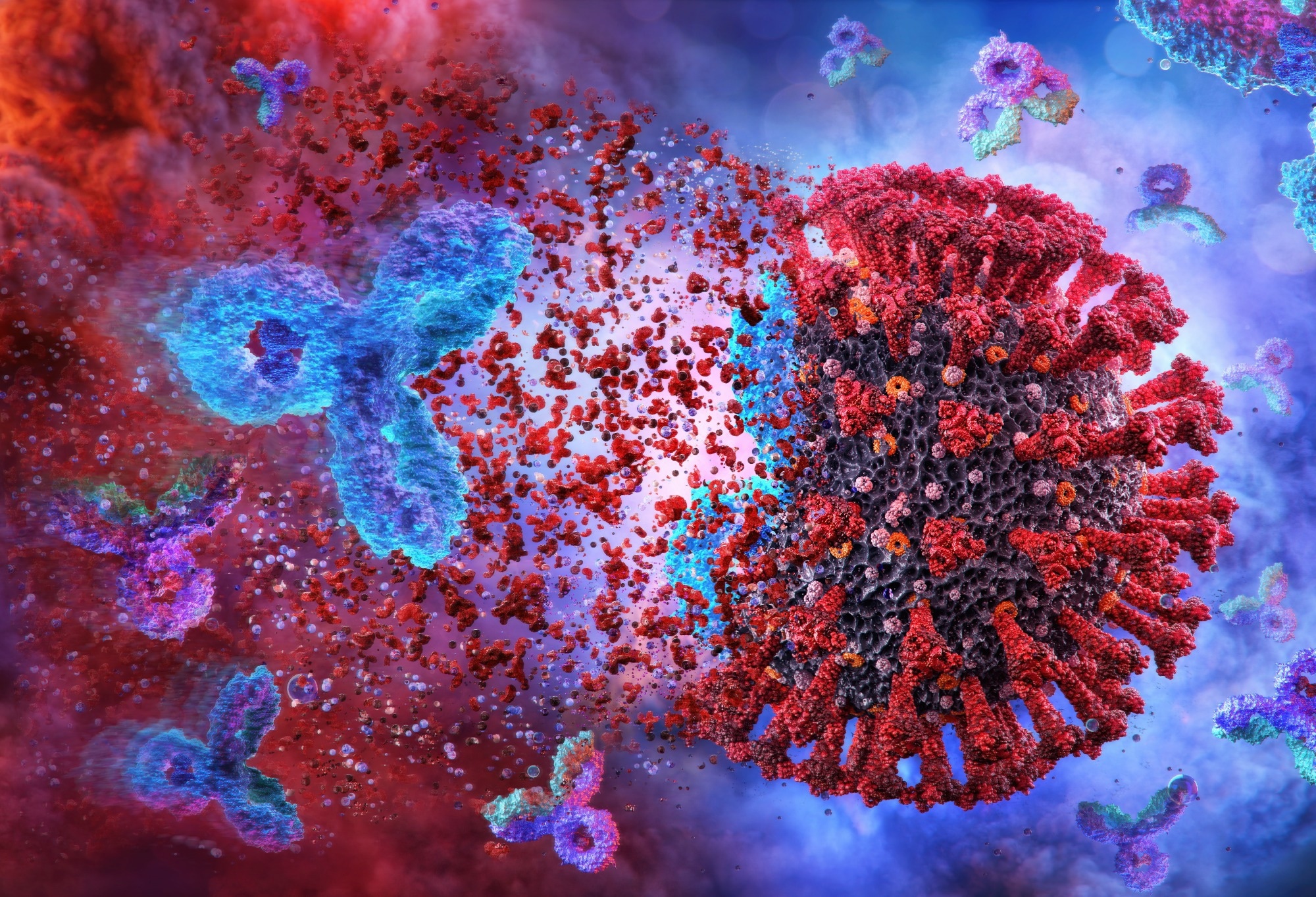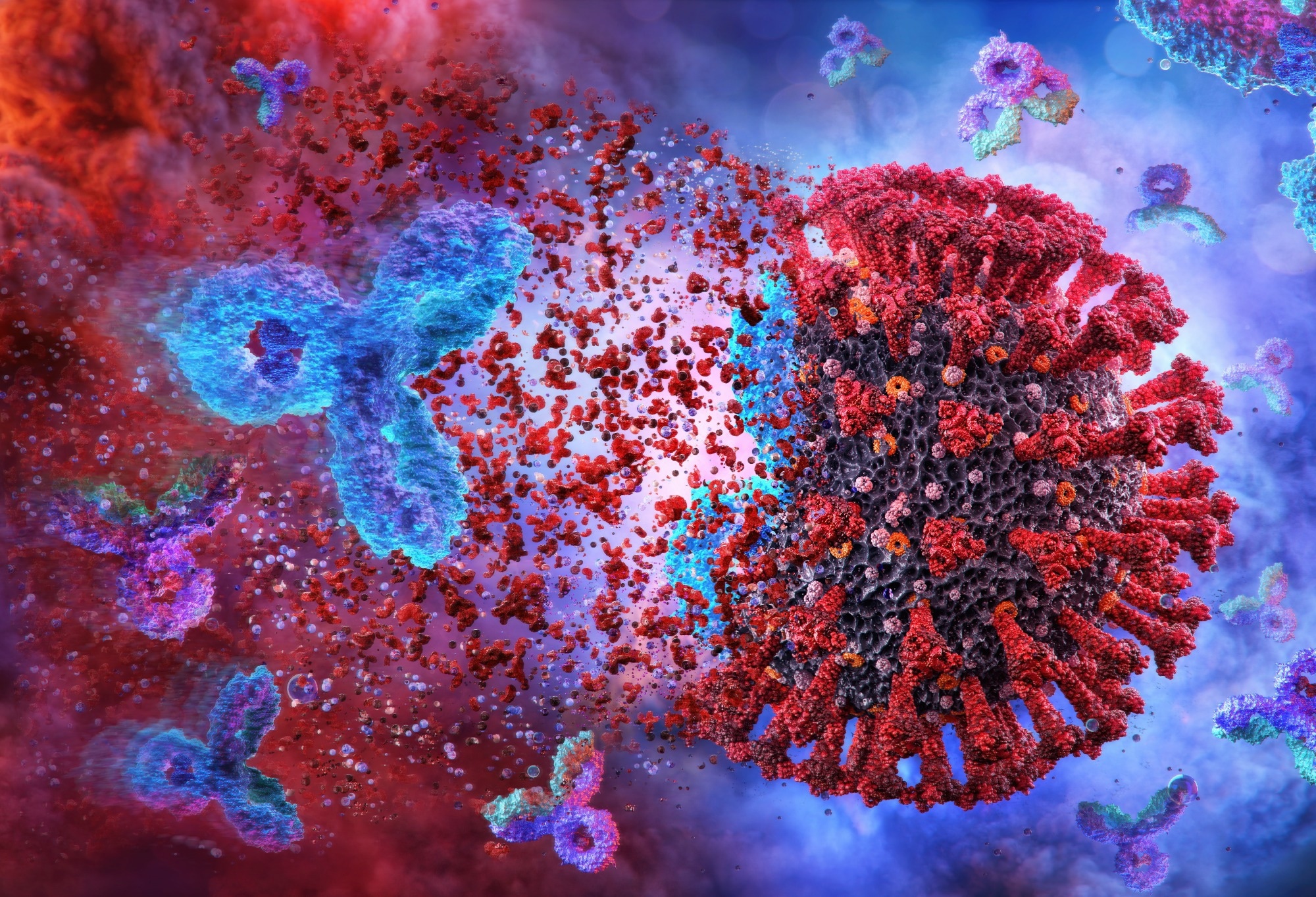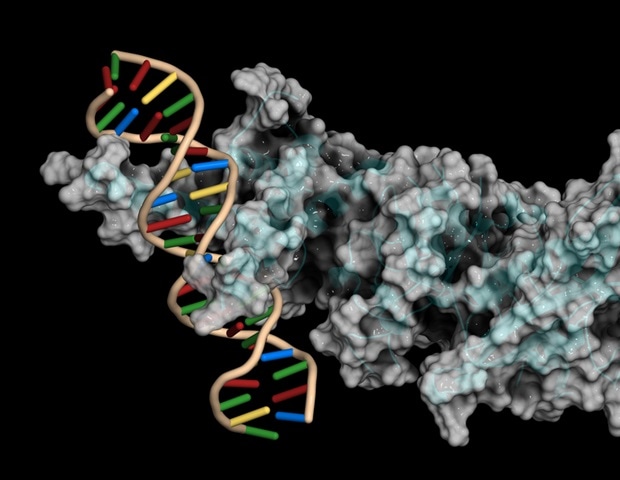
In a recent study posted to the bioRxiv* preprint server, researchers engineered epitope scaffolds (ESs) of conserved regions of the severe acute respiratory syndrome coronavirus 2 (SARS-CoV-2) spike protein.


Most anti-SARS-CoV-2 immune responses are directed toward the spike’s receptor-binding domain (RBD). Nevertheless, studies have reported the plastic nature of this domain, suggesting that vaccines should elicit antibodies beyond the RBD to protect against existing and emergent CoVs. The fusion peptide (FP) and stem helix in the S2 subunit of the spike are highly conserved across diverse CoVs.
Antibodies against these sites exhibit cross-reactivity with Alpha and Beta CoVs. Natural infection or available vaccines do not induce humoral responses against these epitopes. This is likely due to their occlusion on the pre-fusion spike and the prominent display of the immunodominant RBD. Immunogens eliciting potent responses against these sites may play a pivotal role in developing a pan-CoV vaccine conferring broad protection.
The study and findings
In the present study, researchers designed and evaluated FP and stem helix ESs that robustly interact with broadly cross-reactive antibodies. A library of over 10,000 small monomeric protein scaffolds was computationally queried by applying the previously described sidechain grafting method to identify proteins with exposed backbone regions resembling the FP epitope. Fifteen engineered FP ESs were recombinantly synthesized.
Six ESs were soluble and stable proteins binding to DH1058, an anti-FP antibody. Three constructs (FP2, FP10, and FP15) exhibited picomolar binding affinity to the antibody. Further, when binding of the ESs to three additional antibodies (COV44-79, COV44-62, and VN01H1) was measured, all FP ESs bound to at least two antibodies, with FP2, FP10, and FP15 ESs binding to the three antibodies.
Next, the team engineered ESs for antibodies against the stem helix. S2P6, CC40.8, and DH1057.1 antibodies bind to a stem-helix epitope occluded in the pre-fusion structure. Since the CC40.8 epitope also includes the S2P6 epitope and is longer, they attempted to design ESs with CC40.8-bound conformation. However, the sidechain grafting failed to identify candidate scaffolds.
Nonetheless, multiple ESs with S2P6-bound conformation of the 1148-1156 epitope segment was successfully designed, and 15 S2P6-directed constructs (S2hlx1 to S2hlx15) were recombinantly expressed. Seven constructs were soluble proteins. These seven constructs bound to DH1057.1 and S2P6 are comparable to or better than the synthesized stem helix peptide (1147 to 1161 residues).
Two constructs (S2hlx7 and S2hlx15) had higher binding affinities to S2P6 than the native spike and sub-nanomolar binding affinity for DH1057.1. The binding specificity of these designs was confirmed by introducing mutations in the ESs. Notably, none of the stem helix ESs could bind to CC40.8, as the residue (L1145) was absent in these ESs.
The team alternatively applied a backbone grafting method to generate ESs that engage CC40.8, given the failure of the sidechain grafting technique. Six ESs (S2hlx-Ex1 to S2hlx-Ex6) were expressed and screened for S2P6 binding. Four ESs bound to S2P6, but three (S2hlx-Ex2, S2hlx-Ex4, and S2hlx-Ex6) had poor expression.
These three ESs were optimized, and sequences with high yields were identified with variable success rates. Finally, the team analyzed the engineered ESs for cross-reactivity with pre-existing immune responses. Serum/plasma samples from individuals, who were infected, vaccinated, or vaccinated post-infection, were tested for binding to SARS-CoV-2 WA-2 spike, RBD, and FP and stem helix peptides.
This revealed that binding to FP and stem helix peptide was much lower than binding to RBD. Contrastingly, FP and S2hlx-Ex ESs exhibited much higher recognition of sera than the synthesized FP or stem helix peptides. Specifically, FP15 showed the best recognition among FP ESs. FP2 and FP10 ESs had lower binding levels than FP15, albeit higher than the synthesized FP.
Among stem helix ESs, S2hlx-Ex15 and S2hlx-Ex19, the ESs derived after optimizing the S2hlx-Ex2 sequence exhibited the highest recognition of immune responses. The team used fluorescence-activated cell sorting (FACS) to assess memory B cell (MBC) responses from vaccinated individuals after infection. This revealed the highest titers of S2hlx-Ex19-reactive antibodies.
Conclusions
The researchers described new immunogens that elicit humoral responses against the FP and stem helix peptide epitopes. The findings revealed that the engineered ESs engage multiple antibodies with high specificity and affinity. The ability to induce high antibody titers against these epitopes is critical to developing a pan-CoV vaccine. In the future, studies should examine the ability of these ESs to elicit antibodies against FP or stem helix by primary or booster vaccination.
*Important notice
bioRxiv publishes preliminary scientific reports that are not peer-reviewed and, therefore, should not be regarded as conclusive, guide clinical practice/health-related behavior, or treated as established information.













